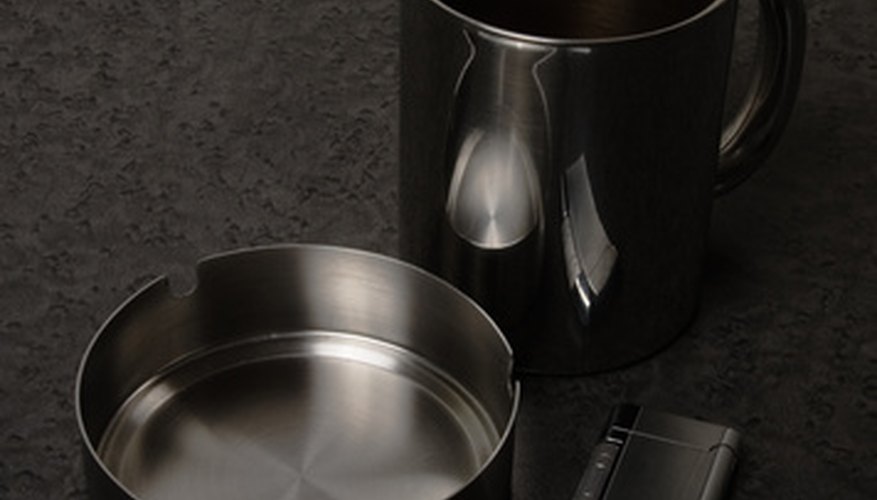Steel, an alloy consisting of iron and carbon, makes up the majority of metal building or toolmaking material. Like all metals, steel can conduct electricity. Some types of steel, such as electrical steel, consist of other materials than carbon. For example, 304 stainless steel includes chromium, zinc and carbon. Different metal compositions alter the electrical properties of the steel, making it more suitable for use in electrical work or construction. The three main electrical properties of steel include its electrical conductivity, electrical resistivity and temperature coefficient.
Electrical Conductivity
Electrical conductivity, measured in Siemens per meter, or S/m, indicates the ability of a material to conduct an electrical charge over a certain distance. Electrical conductivity depends on the amount of free electrons available to transfer a charge. The measurement is the ratio of current density to the strength of an applied electrical field, or how much of the total field actually is flowing through the material rather than through its surrounding medium such as water or air. According to Eddy Current Technology, 304 stainless steel has a standardised conductivity of 1.45x10^6 Siemens/meter.
- Electrical conductivity, measured in Siemens per meter, or S/m, indicates the ability of a material to conduct an electrical charge over a certain distance.
- The measurement is the ratio of current density to the strength of an applied electrical field, or how much of the total field actually is flowing through the material rather than through its surrounding medium such as water or air.
Electrical Resistivity
Resistivity is the opposite of conductivity--the difficulty of a material to carry an electrical current. Materials with high resistivity make excellent electrical insulators because they don't carry a current. Electrical resistivity is measured in ohms/meter, as the reciprocal of conductivity. 304 stainless steel has an electrical resistivity of 7.2x10^-5 ohms/centimetre, or 7.2x10^-3 ohms/meter, according to Lenntech Water Treatment Solutions.
- Resistivity is the opposite of conductivity--the difficulty of a material to carry an electrical current.
- Electrical resistivity is measured in ohms/meter, as the reciprocal of conductivity.
Temperature Coefficient
Because temperature affects electrical conductivity and resistivity, these properties are measured and documented at 20 degrees Celsius. The temperature coefficient determines how much temperature will increase or decrease electrical resistance. According to All About Circuits, steel with 0.5% carbon has a positive temperature coefficient of 3x10^-3. Its resistivity increases with temperature because the molecules of the steel are spread farther apart.
- Because temperature affects electrical conductivity and resistivity, these properties are measured and documented at 20 degrees Celsius.
